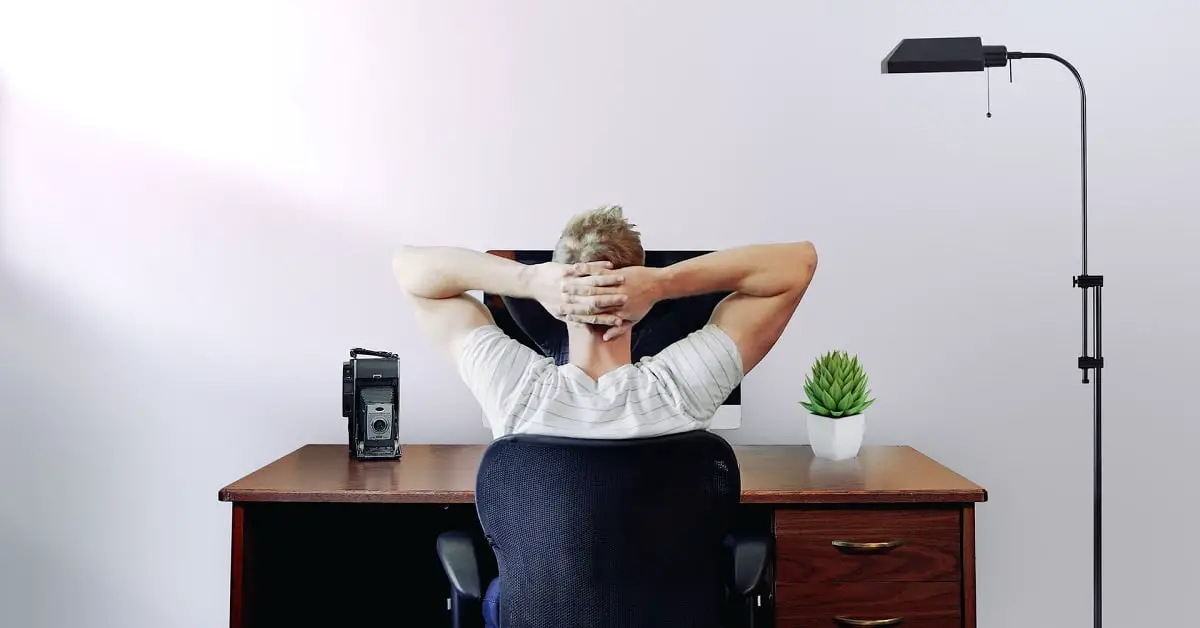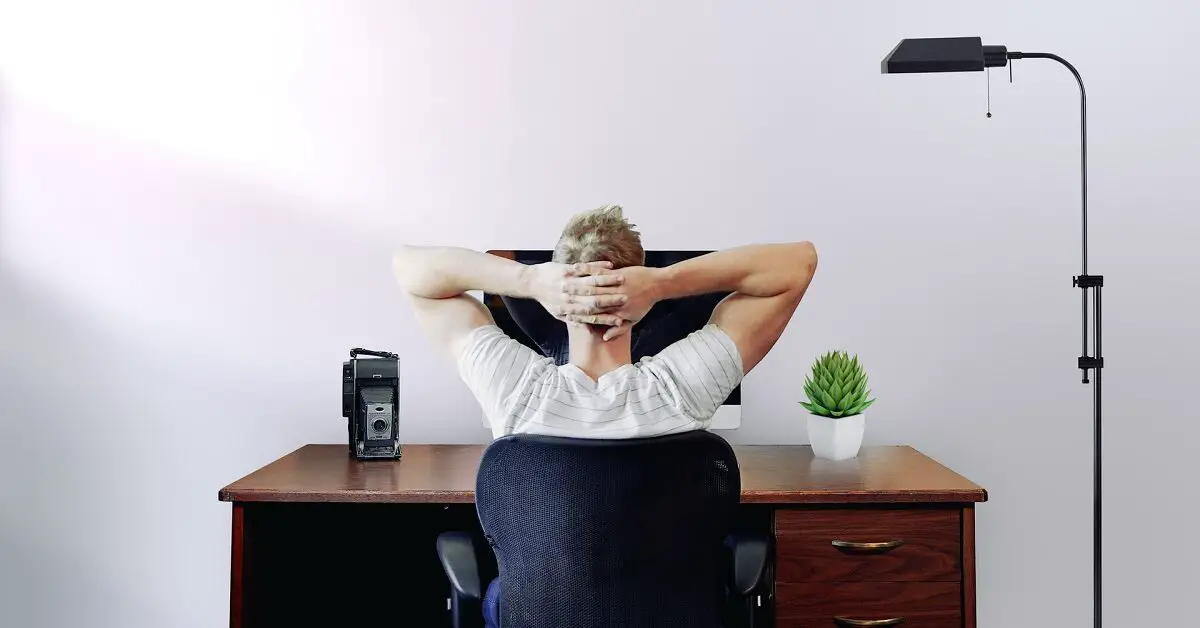
This article answers questions you may have about how to burn calories while sitting and the health benefits of increased activity during prolonged sitting. We list practical strategies you may adopt to burn calories while sitting and thus improve your health status.
Research studies suggest that even modest physical activity levels while sitting may be more effective than standing for increasing total daily energy expenditure (TDEE) and combating the adverse health effects of a sedentary lifestyle.
Prolonged sitting is bad for your health. It is associated with an increased risk of cardiovascular diseases, diabetes, and cancer. It may impair cognitive function and increase the risk of obesity and early mortality.
Although a sedentary lifestyle significantly increases the chances of early mortality, many people can’t entirely avoid it due to their employment or profession. People whose jobs may require long hours of sitting include scholars, clerks, accountants, writers, computer operators, and doctors.
The increasing reliance on TV, computers, video game devices, and the internet for entertainment has decreased leisure time dedicated to outdoor and sporting activities.
However, researchers have been conducting studies to explore strategies that people whose work involves prolonged sitting may adopt to counteract the adverse health effects of a sedentary lifestyle.
These include ways to burn more calories while sitting.
Contents:
21 ways to burn more calories while sitting (with video demonstrations)
–increased leg movement while sitting
–dynamic sitting or chair-based fidgeting
Other contents:
Why a sedentary lifestyle is bad for your health
Sedentary lifestyle increases the risk of early mortality
How many calories do you burn sitting?
Do you burn more calories standing than sitting?
Calories burned standing vs sitting
Prolonged standing may also be bad for your health
Calories burned sitting vs walking
Why a sedentary lifestyle is bad for your health
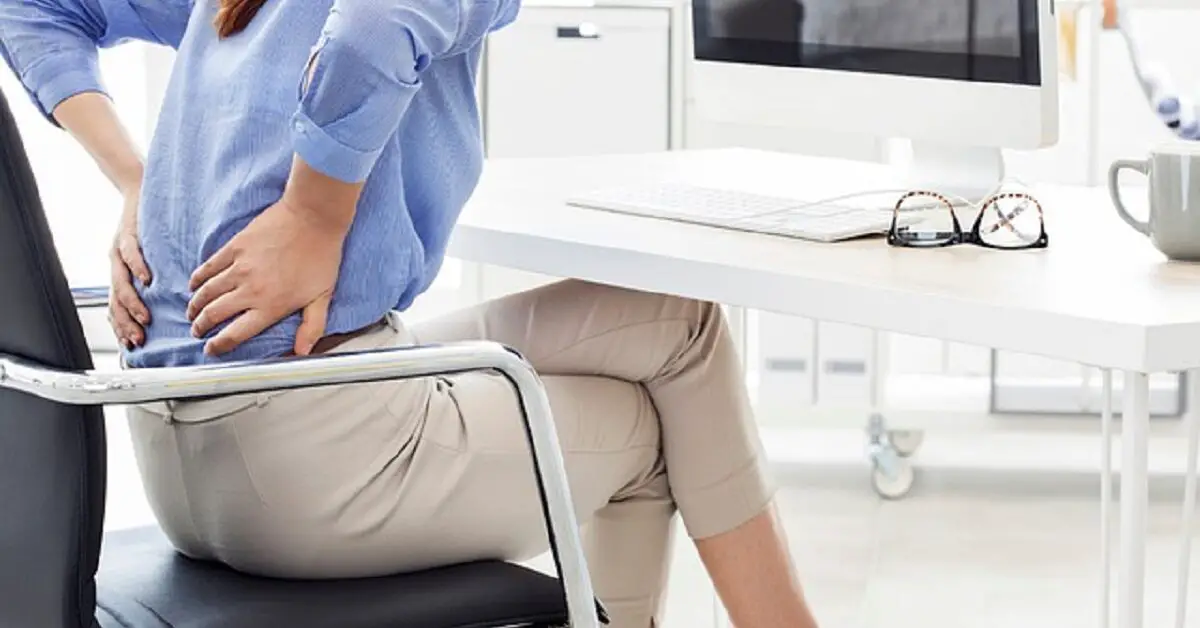
Medical experts warn that sitting for long hours is a risk factor for early mortality. Studies indicate that the higher the proportion of time you spend sitting, the higher your risk of premature death even if you engage in regular physical exercise.
According to Park and co-workers (2020), a sedentary lifestyle negatively impacts health through various means. It reduces muscle glucose, transporter protein and lipoprotein lipase activity. It also impairs lipid metabolism and diminishes carbohydrate metabolism.
A sedentary lifestyle decreases cardiac output and systemic blood flow. It activates the sympathetic nervous system, aggravates chronic inflammation, lowers the circulation of sex hormones, and increases the incidence of cancers. It increases the risk of weight gain and obesity.
Prolonged sitting also increases the risk of diabetes and cardiovascular diseases by reducing insulin sensitivity and diminishing vascular function.
Sedentary lifestyle increases the risk of early mortality

In a study of 222,497 individuals 45 years and older, Van Der Ploeg (2012) and colleagues found that the risk of early death increased with the proportion of the day spent sitting.
The researchers reported that adults who sat for more than 11 hours daily had a 40% increased risk of dying from various causes within 3 years, compared to those who sat for less than 4 hours a day.
People who sat for 8-11 hours a day had a 15% increased risk of early death, compared with people who sat for less than 4 hours daily.
According to Van Der Ploeg and associates, prolonged sitting increased all-cause mortality (death due to all causes) regardless of body mass index (BMI) and lifestyle factors, such as smoking and diet.
It was also independent of physical activity level (PAL), gender, living conditions, and presence of other chronic diseases, such as diabetes, cancer, and heart diseases.
Van Der Ploeg and co-workers recommended that public health programs focus on strategies to encourage people to spend less time sitting. People should also increase the proportion of time spent engaged in health-promoting physical activities.
But in contrast to time spent sitting, time spent sleeping 7-8 hours daily promotes health. We also have answers to all your questions about how many calories you burn while sleeping.
How many calories do you burn sitting?

Creasy and colleagues (2016) reported comparative energy expenditure (EE) data for sitting, standing, and walking for 15 minutes (see below). We list the data below, expressing calories burned in 15 minutes as calories burned per hour:
- Calories burned sitting watching TV: ≈ 74.64 kcals/hour (18.66 ± 4.01 kcal/15 mins)
- Calories burned sitting using a laptop computer: ≈ 78.52 kcals/hour (19.63 ± 6.90 kcal/15 mins)
- Calories burned walking/hour (≤3.0 mph): ≈ 223.7 kcals/hour (55.92 ± 14.19 kcal/15 mins)
- Calories burned standing watching TV: ≈ 87.7 kcals/hour (21.92 ± 5.08 kcal/15 mins)
Do you burn more calories standing than sitting?
The study by Creasy and colleagues showed that people burn more calories standing than sitting.
Standing watching TV burned about 13.06 kcals/hour more than sitting watching TV. If the subject stood for three hours watching TV instead of sitting, they would burn an extra 39 kcals (much less than the number of calories in a small apple).
However, there was a dramatic increase in energy expenditure (EE) equivalent to 149.06 kcals (223.7 kcals – 74.64 kcals = 149.06 kcals) when the subject walked at a leisurely pace on a treadmill for an hour instead of merely standing.
An EE of 149 kcals is nearly the amount of calories in two medium-sized fried eggs.
Standing desk vs sitting
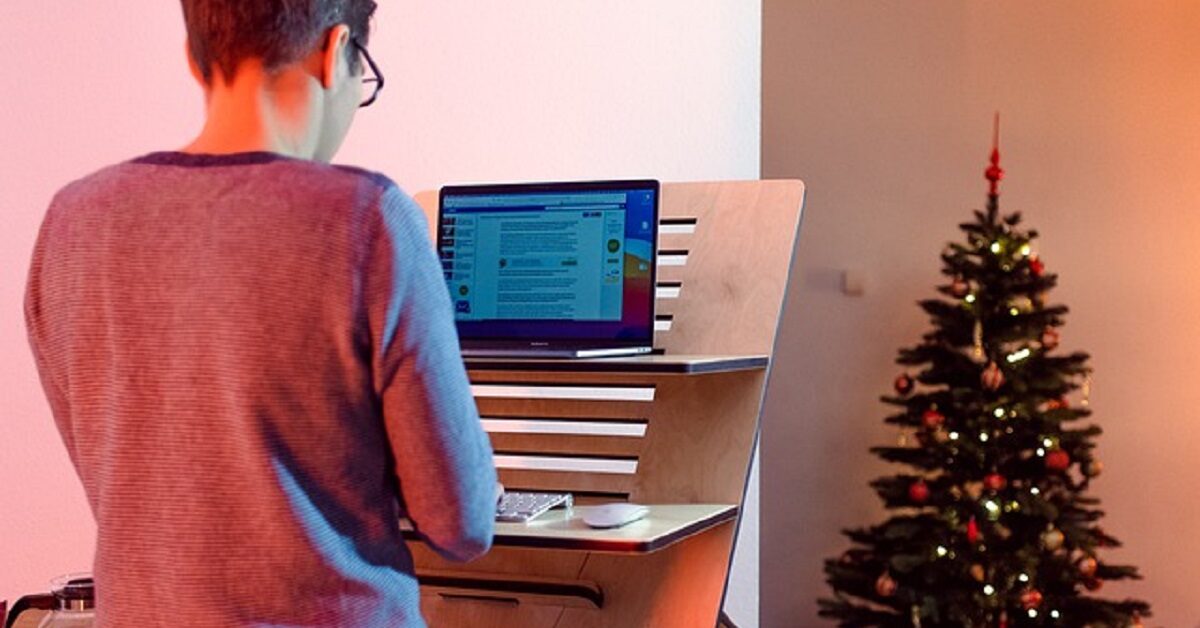
Writing in the Harvard Health blog, Robert Shmerling, MD, noted that previous studies to assess calories burned while standing vs sitting suggested a much higher calorie expenditure for standing. However, Creasy and colleagues used indirect calorimetry to measure energy expenditure (EE). Thus, their results were likely more accurate, Shmerling noted.
The study raised questions about recommendations that people who spend lots of time sitting need to substitute some of their sitting hours with standing to gain health benefits. The study by Creasy and associates suggested that while you burn more calories standing than sitting, the difference may be too small to gain significant health benefits.
Saeidifard and associates (2018) reported in a subsequent study that replacing sitting with standing was one of the most commonly offered recommendations to counter the detrimental effects of prolonged sitting. But the researchers acknowledged that the recommendation remained controversial due to results from studies, such as Creasy et al..
Calories burned standing vs sitting
Saeidifard and associates (2018) conducted a systematic review and meta-analysis of previous studies to estimate the mean difference in energy expenditure between sitting and standing for female and male subjects.
They found that the mean difference in EE between sitting and standing for adults was about 9 kcals/hour (0.15 kcal/min).
- The difference for female subjects was 6 kcals/hour (0.1 kcal/min)
- The difference for male subjects was 11.4 kcals/hour (0.19 kcal/min)
The authors estimated that a 65kg person substituting sitting with standing for 6 hours a day burned an extra 54 kcal/day, equivalent to about 2.5kg of fat mass a year, assuming the subject did not increase energy intake.
The researchers concluded that substituting sitting with standing may alleviate health problems associated with a sedentary lifestyle. Standing instead of sitting has potential health benefits and may prevent weight gain in the long term, according to researchers.
But they recommended more studies to assess the effectiveness and feasibly of the strategy.
Prolonged standing may also be bad for your health
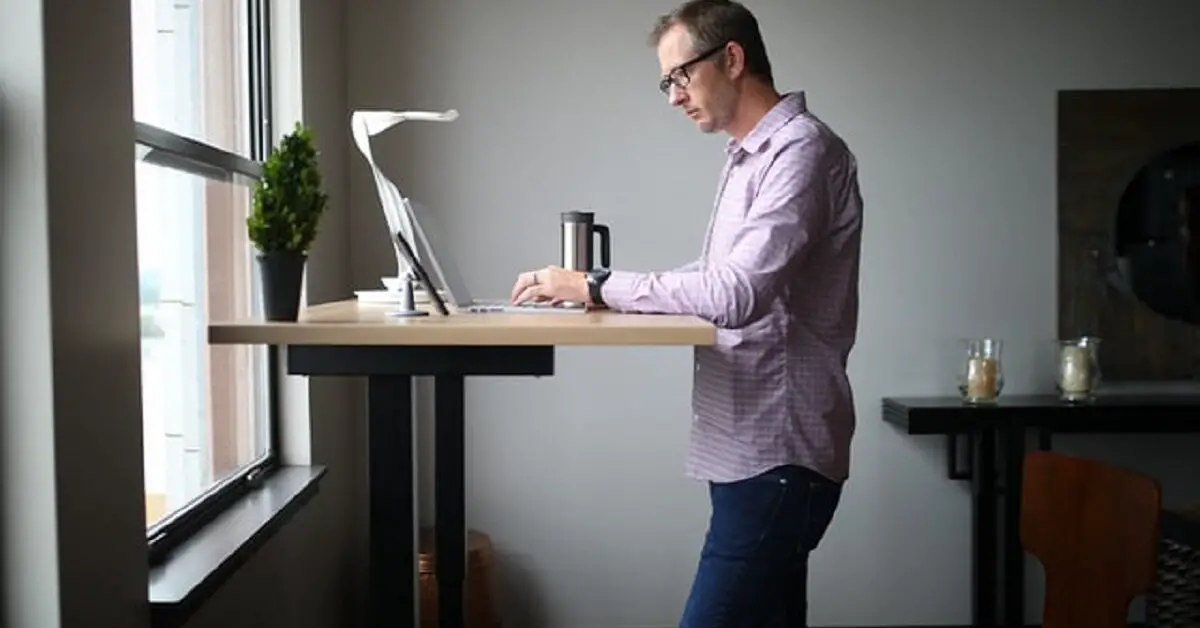
Saeidifard and associates concluded that standing may alleviate health problems associated with a sedentary lifestyle. However, not many people will likely warm to the proposal of standing 6 hours a day for an entire year for the meager reward of 2.5kg weight loss.
A weight loss of 2.5kg a year is much less than the average overweight person can reasonably hope to lose monthly on a well-planned weight loss diet.
Besides, research has shown that prolonged standing could be as harmful to your health as prolonged sitting.
Waters and Dick (2015) reported that prolonged standing was associated with potentially serious health problems, such as fatigue, discomfort, pain in the spine, hips, knees, lower limbs, legs, and an increased risk of cardiovascular diseases.
Prolonged standing was associated with an increased risk of
- Lower back pain (Nelson-Wong et al., 2010)
- Venous problems (Tomei et al., 1999)
- Varicose veins (Tüchsen et al., 2000)
- Venous or leg edema (Partsch et al., 2004)
- Chronic venous insufficiency (McCulloch, 2002; Krijnen et al., 1997)
- Blood pressure changes (Ngomo et al., 2008)
- Cardiovascular disease symptoms (Sudol-Szopinska et al., 2007)
Smith and associates (2017) reported that even after adjusting for multiple social and demographic factors, jobs that required standing for long hours were associated with an approximately 2-fold risk of heart disease.
Calories burned sitting vs walking
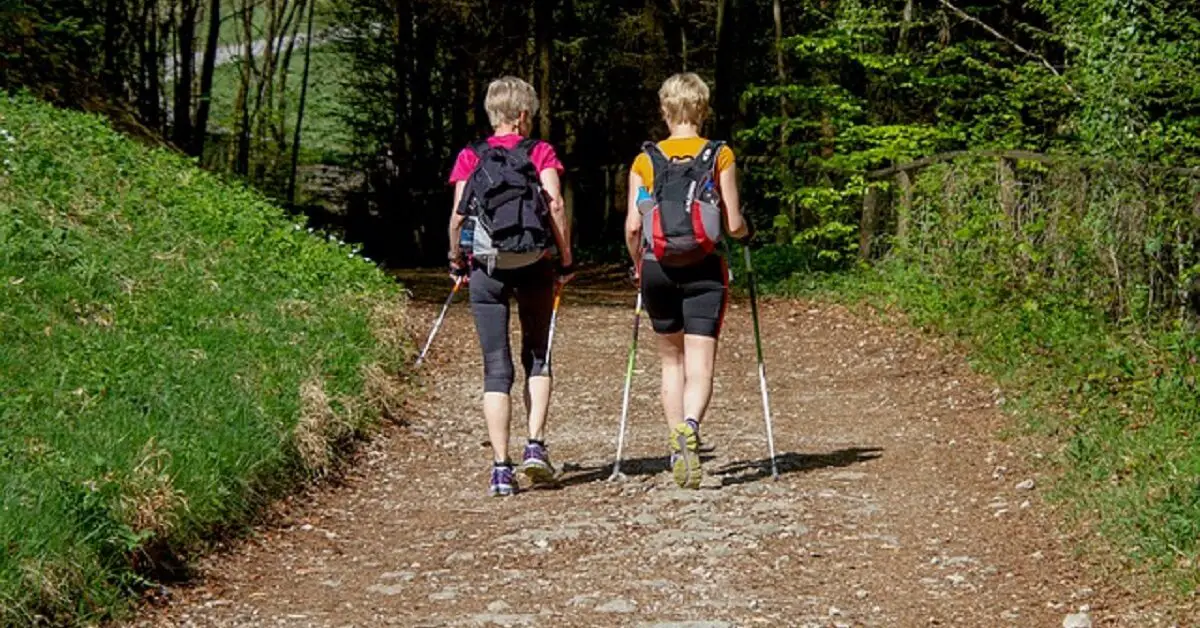
Creasy and colleagues (2016) noted that adopting optimum strategies to boost energy expenditure may help prevent the harmful effects of a sedentary lifestyle.
The researchers investigated strategies that desk workers may adopt to increase energy expenditure (EE).
A total of 74 subjects participated in the study. The researchers randomly assigned the subjects to perform two of four different activities (see listed below) so that each participant transitioned from performing a sitting task to performing a standing task (or vice versa) or performing a sitting task to walking (or vice versa).
- Sitting using a laptop computer
- Sitting watching TV
- Standing watching TV
- Walking at a self-selected pace (≤3.0 mph)
The subjects performed each assigned activity for 15 minutes, with a short rest before performing the second activity.
Using indirect calorimetry, the researchers measured and compared the cumulative or total energy expenditure (EE):
- Calories burned sitting watching TV to walking: 74.50 ± 17.88 kcal
- Calories burned walking to sitting watching TV: 82.72 ± 21.70 kcal
- Calories burned sitting using a laptop computer to standing: 45.38 ± 14.78 kcal
- Calories burned standing to sitting using a laptop computer: 45.64 ± 9.69 kcal
Based on the data (see above), the researchers concluded that while substituting periods of sitting with walking significantly increased energy expenditure (EE), replacing periods of sitting with standing did not affect EE significantly.
The study added to a growing body of evidence suggesting that standing may not be an optimum strategy for counteracting the adverse health effects of prolonged sitting.
It suggested that people who live a sedentary lifestyle would gain more significant health benefits by substituting periods of sitting with pacing or walking (such as on a treadmill) rather than merely standing.
21 ways to burn more calories while sitting

Research evidence suggesting that replacing sitting with standing may not be an optimum strategy for countering the adverse effects of prolonged sitting prompted researchers to begin investigating alternative recommendations that offer more health benefits.
Some researchers have presented evidence that adopting strategies to boost EE while sitting could be equally or even more effective than standing for burning calories.
We shall examine some of the recommendations based on the findings of recent studies:
1. Increased leg movement while sitting
A 2017 study by Horswill and colleagues (2017) explored strategies people may adopt to counteract the ill effects of prolonged sitting.
They concluded that strategies to increase non-exercise activity thermogenesis (NEAT) through continuous leg movement while sitting may be more effective for increasing overall EE than standing.
Non-Exercise Activity Thermogenesis (NEAT) refers to the energy expended due to daily physical activities of a routine nature that doesn’t reach the level of a vigorous or structured physical workout.
NEAT is the energy expenditure associated with daily activities besides sleeping, eating, or sports-like exercise. It includes energy expenditure due to daily routine activities, such as walking to work, typing on your laptop, gardening, washing your car, cooking, showering, doing the laundry, washing the dishes, and walking up the stairs.
It also includes “trivial” activities such as whistling a tune and fidgeting while watching TV.
Horswill and associates examined the metabolic rates of subjects during sitting only, standing only, and sitting while using a device that promoted leg movement.
They found that even modest physical activity levels, such as leg movement with a HOVR device (see video below), significantly elevated metabolic rate (17.6%) compared with sitting only.
They also found that leg movement during sitting elevated metabolic rate by 7% compared with standing.
The authors concluded that strategies to increase physical activity during sitting may significantly elevate NEAT during otherwise sedentary work hours.
According to Horswill, the study confirmed previous studies that suggested that adopting strategies for increasing non-exercise active thermogenesis (NEAT) may help to alleviate the adverse health effects of sitting for long hours.
While exercising was a way to counteract the detrimental effects of sitting, setting aside some minutes or a few hours daily for structured physical exercises does not remedy the adverse effects of a sedentary lifestyle, the researcher said.
“These results suggest that non-exercise active thermogenesis, which we call NEAT, can increase movement and calorie burning, and may have the potential to impact health,” Horswill explained.
Besides increased leg movement, you may also burn more calories while sitting by:
- Maintaining a good posture.
- Stretching your limbs.
- A lively conversation or debate while sitting may burn more calories (possible if the desk job you are doing does not require significant mental concentration).
- Laughing.
- Playing with a Rubik’s Cube.
- Moving, jiggling, rocking, or dancing on your seat while listening to music.
- Chewing bubble gum.
- Repeatedly tightening or squeezing your stomach muscle.
- Doing casual breathing exercises.
- Typing as fast as you can on your laptop keyboard.
- Use a rocking chair; rock continuously.
- You can burn more calories while sitting in a sauna.
2. Dynamic sitting or chair-based fidgeting
Koepp and associates (2016) reported that studies have associated a sedentary lifestyle with chronic diseases, impaired cognitive function, and obesity. However, only a few feasible suggestions have been proposed to combat the ill effects of sedentariness due to work and employment.
The researchers suggested that “dynamic sitting” or “chair-based fidgeting” could be a superior alternative to standing recommendations.
Dynamic sitting involved using an under-table device designed to promote fidgeting while sitting.
Koepp and associates hypothesized that a chair or desk fitted with a fidget bar could significantly increase energy expenditure, specifically NEAT. It is especially suitable for school children and teenagers because it helps to boost physical activity levels during hours of sitting at desks taking lessons or doing homework (see video below).
The authors estimated energy expenditure by measuring heart rates in 16 people while they sat on a standard chair and compared it with energy expenditure
- While they sat on a chair with a device that encouraged leg fidgeting
- While they sat on a fidget promoting chair
They found that energy expenditure increased significantly when subjects used an under-table fidget device or a fidget-promoting chair.
- Standard chair: 76±31 kcal/hour;
- Chair with under-desk leg-fidget bar: 98±42 kcal/hour
- Fidget chair: 89±40 kcal/hour
Koepp and associates concluded that fidgeting while sitting may increase energy expenditure by approximately 20–30%. However, they did not observe any significant increase in heart rates.
The researchers recommended that:
- Organizations may use chair-based fidgeting as a weight maintenance or weight loss strategy
- Organizations may also use chair-based fidgeting to reduce sedentary time at work
Chair-based fidgeting that may help burn more calories while sitting include:
- Tapping your feet.
- Wiggling in your seat.
- Playing with fidget toys.
- Jiggling your leg.
- Using a stability ball or balance ball instead of a standard chair promotes fidgeting.
3. Chair-based exercise
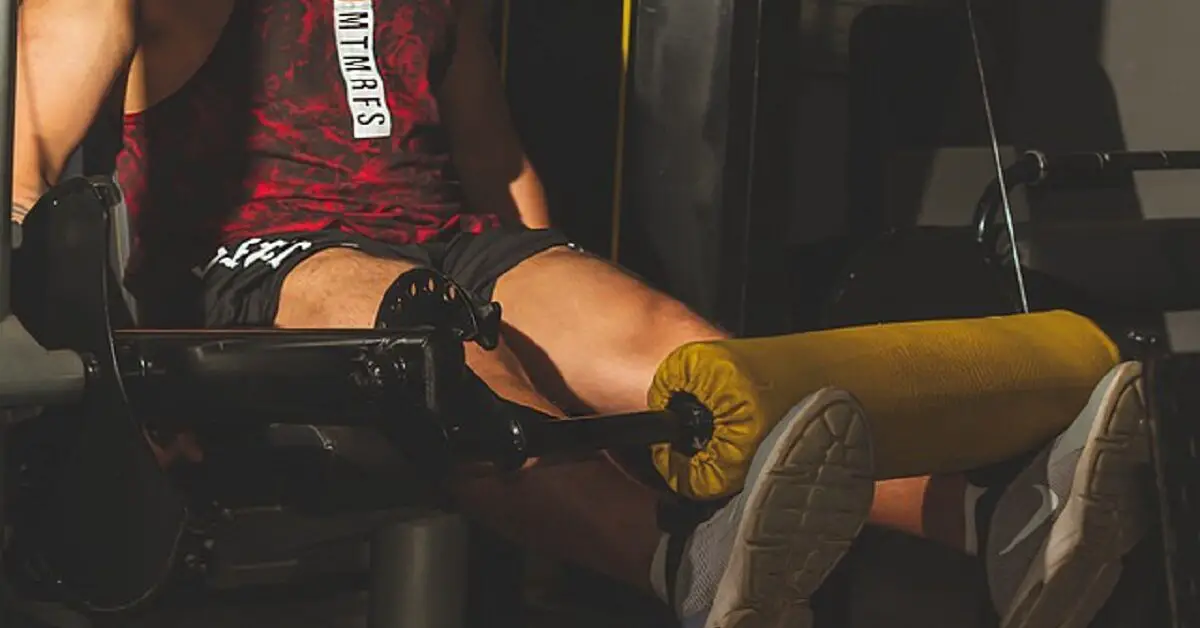
Chair-based exercise refers to fitness activity performed while seated. Chair-based exercise is beneficial for older adults and people with mobility issues and people who can’t exercise without support.
Chair-based exercises include cardio, strength training, and yoga exercises performed while sitting (see videos below):
Cardio exercises while seated include:
- Jumping jacks
- Knee lifts
- Jumping ropes
Chair-based strength-training exercises while seated include:
- Leg lifts
- Biceps curls
- Body lifts
- Recliner sit-ups
Chair-based yoga:
Klempel and associates (2021) conducted a systematic review to assess the health benefits of chair-based exercise for older adults. They reported it was easy to implement and improved upper and lower extremity function and strength.

